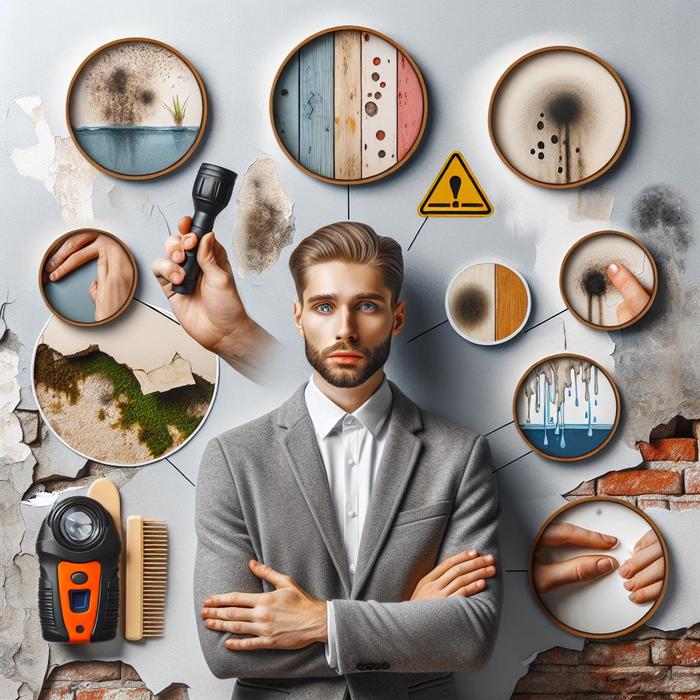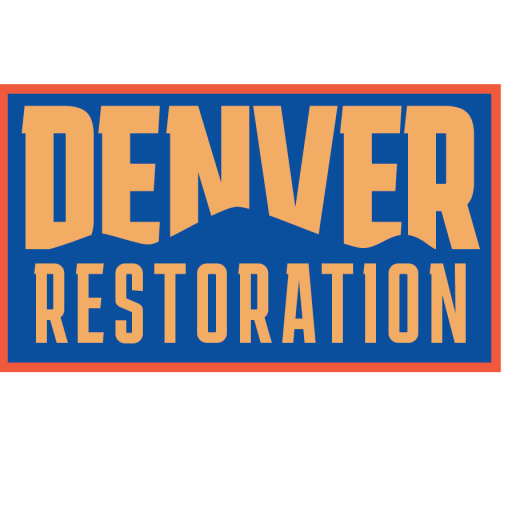Recognizing the Signs of Mold Behind Walls
Mold is a serious issue that could potentially damage your property and negatively impact the health of its occupants. Of great concern is its predilection for thriving behind walls, undetected until significant harm has occurred. It’s vital to catch this silent invader early, and the first step is recognizing the signs of mold behind walls.
Persistent Musty Odor
One of the critical indicators of mold growth is a persistent unpleasant odor reminiscent of wet socks or rotting wood. Mold releases volatile organic compounds (VOCs) as it grows, which is what you smell. If the aroma intensifies when your HVAC system is switched on, or you’re close to a specific wall, it may likely be mold hiding behind.
Visible Mold Spots
Although mold often grows out of sight, there are instances when it becomes visible on your wall surfaces. These spores might appear as black, green, or white spots and can easily be mistaken for dust or dirt. So, if you notice something unusual on your wall surfaces, it’s time to investigate if it could be a mold outbreak.
Wall Discoloration
Affected walls by mold often exhibit discoloration. You might observe unusual spots of varying colors – gray, black, green, or even blue. These could be the outward signs of a hidden mold problem.
Warping or Bubbling of Walls
Mold growth often brings about dampness, leading to damage to the affected area. Over time, this can cause the walls to bubble or warp – a clear sign of water damage and, possibly, mold. It is crucial to consult a professional in such cases, to prevent extensive damage that could necessitate a total wall replacement.
Allergic Reactions Among Occupants
If you or your family members begin to experience unexplained allergic reactions, like runny noses, itchy eyes, skin rashes, or difficulty in breathing, it could be a sign of mold infestation in your property. Note, however, that these symptoms are not exclusive to mold exposure, and it is necessary to rule out other potential allergens.
The Importance of Early Detection
The early detection of mold is crucial in averting significant damage to your property and protecting the health of its occupants. Not only can mold destroy aesthetic finishes, but it can also cause structural damage if unchecked, leading to costly repairs and restoration. Furthermore, prolonged exposure to mold can lead to serious health issues.
Relying on Professional Assistance
Once you identify one or more signs of mold behind your walls, it is essential to involve professionals. These experts will conduct a thorough inspection and assessment of the situation, wield state-of-the-art equipment to remove the mold, and implement effective restoration techniques to restore your home to its original state.
For more information about mold and its removal, consider looking at our expert tips on how to remove mold from your attic and what causes mold in basements.
Final Words
Knowing the signs of mold behind walls is your first line of defense against this silent invader. Being proactive in recognizing these signs and acting swiftly can save you immense stress and costly property damages. Once mold is suspected, seek expert advice immediately – your property’s longevity and the health of its occupants may depend upon it.
In addressing this, it is also important to understand the top causes of fire-related damages and how to tackle them for effective restoration. For more on this, you can refer to our guide on understanding the top causes of kitchen fires.
The Decisive Role of Damage Assessment and Estimation
When faced with mold damage, understanding the extent is crucial. This investigation directly impacts the remediation strategy, duration, and cost. It involves meticulous examination of affected areas, material testing, and air quality monitoring, and helps develop a comprehensive plan of action. Thus, accurate damage assessment is central to successful mold restoration.
Restoration Techniques and Equipment Used
Restoration process leverages specific techniques, including containment, demolition and disposal of contaminated materials, drying, cleaning, and sanitizing. State-of-the-art infrared cameras for detecting moisture levels and commercial-grade air movers for rapid drying are a few instances of specialized equipment used. Explore how restoration experts use such equipment to remediate mold damage effectively.
Influences of Environmental and Health Safety
Mold presence poses environmental health risks such as respiratory ailments, allergic reactions, and even neurological problems. Moreover, the emission of VOCs contributes to indoor pollution. Hence, ensuring environmental and health safety during mold remediation is paramount. Restorers employ containment strategies and high-efficiency air filtration devices to minimize airborne mold spores, maintaining safety throughout the process.
Insurance and Legal Compliance Factors
Depending on the insurance policy, expenses for mold remediation may be covered. It’s vital to understand what your coverage includes, from initial mold tests to final clean-up. Besides, mold remediation activities are subject to state and local regulations. Contractors must follow these laws, including obtaining necessary permits and adhering to disposal guidelines, ensuring a legal, safe, and compliant process.
Effective Customer Communication and Crisis Management
Mold infestation can disrupt lives by not only causing health hazards but also creating a daunting environment. Therefore, open, timely, and informative communication helps customers make informed decisions and manage the crisis effectively. This approach paves the way for harmonious relations, aiding in swift and satisfactory restoration.
Steps to Mold Remediation
Inspection & Assessment
The first step after identifying a potential mold problem is in-depth inspection and assessment to confirm mold presence and establish its severity. This involves visual inspections, moisture measurements, sampling for laboratory analysis, and thermal imaging to identify damp spots. Effective assessment sets the groundwork for the following mold remediation stages.
Containment & Filtration
Following assessment, containment measures help prevent spreading mold spores during removal. Professionals will isolate the contaminated area and introduce advanced air filtration. Negative air pressure is employed to prevent any mold spores from escaping the contained zone. All openings, including vents and doors, are sealed properly to ensure no cross-contamination occurs.
Removal of Mold & Infested Materials
The actual mold removal starts during this phase. Qualified professionals don protective gear and use specialized toolkits for mold elimination. Biocides can be applied to kill off mold colonies, followed by the careful disposal of infested materials that couldn’t be salvaged.
Cleaning & Sanitation
After removal, thorough cleaning and sanitizing ensure eradication of residual mold and mildew. It’s a critical step involving HEPA vacuuming, antimicrobial treatments, and the use of professional-grade cleaning and deodorizing agents. No stone is left unturned – everything from the building structure to the belongings in it undergoes careful cleaning.
Post-Remediation Verification
The final step is a post-remediation inspection that certifies the effectiveness of the mold remediation. It involves re-testing and visual inspection to confirm that the mold issue has successfully been eradicated and won’t pose future problems.
The Enigma of Hidden Mold
While it may be easy to spot mold growing on exposed surfaces, identifying mold growth behind walls or ceilings can be a daunting task. Here, signs like musty odor or discoloration become even more critical. Sometimes, professional mold testing offers an accurate assessment to pin-point hidden mold. Understand more about detecting hidden mold behind walls here.
Mold Prevention Strategies
Prevention is the best strategy to keep mold at bay. Regular inspection, prompt repair of water damage, reducing indoor humidity, improving ventilation, and using mold-inhibiting products can significantly mitigate mold risk.
While you can’t always prevent mold, understanding signs of its presence and being knowledgeable about remediation measures can help mitigate its impacts. Armed with this knowledge, you can ensure a safe and healthy environment. If you suspect a mold problem, don’t hesitate to contact your local restoration experts.
Diversifying Your Mold Knowledge
Remember, the more you know, the better equipped you’ll be to prevent and deal with mold infestations. We encourage exploring more related articles like can water damage cause mold?, and the top mold remover products for a safe and healthy home. Stay informed, stay safe.

